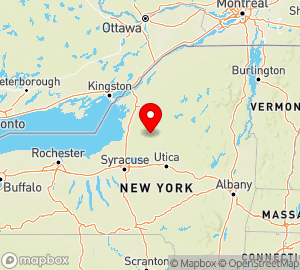Michigan
Michigan State Information

www.michigan.gov
Area (sq mi):: 96716.11 (land 56803.82; water 39912.28) Population per square mile: 178.20
Population 2005: 10,120,860 State rank: 0 Population change: 2000-20005 1.80%; 1990-2000 6.90% Population 2000: 9,938,444 (White 78.60%; Black or African American 14.20%; Hispanic or Latino 3.30%; Asian 1.80%; Other 3.80%). Foreign born: 5.30%. Median age: 35.50
Income 2000: per capita $22,168; median household $44,667; Population below poverty level: 10.50% Personal per capita income (2000-2003): $29,552-$31,178
Unemployment (2004): 7.00% Unemployment change (from 2000): 3.30% Median travel time to work: 24.10 minutes Working outside county of residence: 29.10%
List of Michigan counties:
Michigan Parks
- US National Parks
- Urban Parks
- State Parks
- Parks and Conservation-Related Organizations - US
- National Wildlife Refuges
- National Trails
- National Scenic Byways
- National Heritage Areas
- National Forests
- Marine Sanctuaries
Michigan
Twenty-sixth state; admitted on January 26, 1837
The anniversary of Michigan’s statehood was previously observed as Michigan Day, but is no longer a holiday.
State capital: Lansing
Nicknames: The Great Lakes State; The Wolverine State; Winter Wonderland; the Upper Peninsula is often referred to as the Land of Hiawatha
State motto: Si quaeris peninsulam amoenam, circumspice (Latin “If you seek a pleasant peninsula, look about you”) State bird: Robin (Turdus migratorius) State fish: Brook trout (Salvelinus fontinalis) State flower: Apple blossom (Malus sylvestris); wildflower: Dwarf lake iris (Iris lacustris) State fossil: Mastadon State game mammal: Whitetailed deer (Odocoileus virginianus) State gem: Greenstone (chlorastrolite) State reptile: Painted turtle (Chysemys picta) State soil: Kalkaska sand State song: “My Michigan” (official); “Michigan, My Michigan” (unofficial) State stone: Petoskey stone (Hexagonaria pericarnata) State tree: White pine (Pinus strobus)
More about state symbols at:
www.michigan.gov
SOURCES:
AmerBkDays-2000, p. 90
AnnivHol-2000, p. 15
STATE OFFICES:
State web site:
www.michigan.gov
Office of the Governor PO Box 30013 Lansing, MI 48909 517-373-3400 fax: 517-335-6863 www.michigan.gov/gov
Secretary of State 430 W Allegan St 4th Fl Lansing, MI 48918 517-373-2510 fax: 517-241-3442 www.michigan.gov/sos
Library of Michigan 702 W Kalamazoo St PO Box 30007 Lansing, MI 48909 517-573-5504 fax: 517-373-1580 www.libofmich.lib.mi.us
Legal Holidays:
Michigan
a state in the northern USA, near the Great Lakes; it borders on Canada. Area, 150,800 sq km; population, 8.9 million (1970), including an urban population of 73.8 percent. Its capital is the city of Lansing; the largest city and principal economic center is the port of Detroit.
Michigan consists of two peninsulas—the Lower Peninsula between lakes Huron and Michigan, where more than 95 percent of the state’s population is concentrated; and the Upper Peninsula between lakes Michigan and Superior, covered with coniferous forests and very sparsely populated. The surface is primarily a gently rolling plain; the northwestern section has mountain massifs with elevations reaching 604 m. Its climate is moderate, with colder winters in the Upper Peninsula.
Michigan is one of the leading industrial states in the USA. It ranks sixth in the USA in the number of persons employed in manufacturing (6 percent of all US employees); manufacturing enterprises employ 1.1 million persons (of whom more than half are in Detroit), or 35 percent of the work force in Michigan (1970). Approximately three-fourths of the industrial workers are employed in metallurgy, machine building, and metalworking. The most important branch is the automotive industry, with as many as 400,000 employees. Located in Detroit and its suburbs (Dearborn and elsewhere), as well as in Flint, Lansing, and other cities, are the administrative offices, laboratories, and most important plants of the automobile monopolies—General Motors, Ford, and Chrysler. Linked with the automobile industry is the production of special steels and sheet metal, the casting and processing of ferrous and nonferrous metals, and the production of machine tools, instruments, electrical equipment, paints and varnishes, and rubber. Industries also developed in Michigan are the defense industry and chemicals (Detroit and Midland), silicates and ceramics, food processing, lumbering and wood processing, furniture (Grand Rapids), and paper (Kalamazoo). There is mining, basically of iron ores (about 15 million tons annually), copper ores, and table salt. The rated capacity of electric power plants totals 13.2 gigawatts (1972).
Agriculture consists primarily of dairy farming and vegetable growing. Also cultivated are fruits, grapes (principally along the shores of Lake Michigan), sugar beets, and hay. The products of livestock raising account for approximately 55 percent of the value of commercial agricultural output. In 1972 there were 1.5 million head of cattle, including 500,000 milch cows and heifers, as well as 800,000 pigs. Shipping on the Great Lakes, through connecting waterways, amounts to more than 100 million tons of cargo annually. Lakes Michigan and Superior are tourist regions.
V. M. GOKHMAN
Michigan
a lake in North America in the USA, in the Great Lakes system. It is located at an elevation of 177 m. Area, 58,000 sq km. Maximum depth, 281 m. Linked with Lake Huron by the short Straits of Mackinac, with a width of approximately 3 km.
The shores of Lake Michigan are hilly and weakly dissected and are bordered by terraces; on the south and southeast shores there are dunes (usually 10–20 m high). Tides are semidiurnal, with a height of up to 4 cm. The northern section of the lake freezes. The average length of time the lake is open to navigation is approximately 250 days. Up to the 1950’s salmon, lampreys, whitefish, sturgeon, and pike abounded in Lake Michigan; as a result of catastrophic pollution in the lake, many species of living organisms (for example, salmon) have disappeared. Water vegetation has become widespread. The lake is linked with the Mississippi River system by the navigable Chicago Sanitary and Ship Canal. The lake’s large ports and industrial centers are Chicago and Milwaukee.